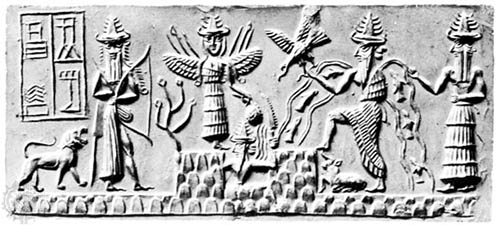 |
|||||||||||||
|
Inanna to Ishtar Review "Inanna to Ishtar" Ishtar: Mesopotamian goddess, written by the editiors of Encyclopaedia Britannica, describes the similarities between Ishtar and Inanna, and talks about their characteristics. It points out that Inanna was a fertility figure, saying, "... she was characterized as young, beautiful, and impulsive—never as helpmate or mother..." Of Ishtar it says, "Her popularity was universal in the ancient Middle East, and in many centres of worship she probably subsumed numerous local goddesses." Read more.  This image of a panel from the British Museum, is described as: "Shamash, the sun god, rising in the morning from the eastern mountains between (left) Ishtar (Sumerian: Inanna), the goddess of the morning star, and (far left) Ninurta, the god of thunderstorms, with his bow and lion, and (right) Ea (Sumerian: Enki), the god of fresh water, with (far right) his vizier, the two-faced Usmu."
You can read a lengthy article about Ishtar/Inanna here: https://en.wikipedia.org/wiki/Inanna |
| Copyright © Redefining the Sacred. All rights reserved. | |
